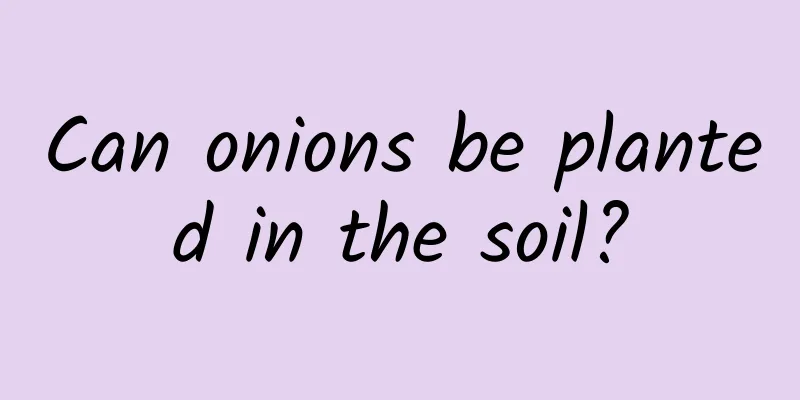Can onions be planted in the soil?

Can onions be planted in the soil?Onions can be planted in the soil. If you want to grow onions, you can use bulb planting, which is the seed collection method used in most parts of China. After the onions are planted, they are sown in September-October of the first year, and the seedlings can be planted in the field or stored in winter to survive the winter. Onions mainly prefer flat and relatively fertile land. Onions grown on such land are not only plump, but also taste very good and the yield will also increase. Secondly, avoid using highly alkaline or highly acidic soil to grow onions, as this will cause poor growth of onions. Onion soil cultivation method1. Land preparation Choose sandy loam plots with fertile soil, deep soil layer and convenient irrigation and drainage for seedling cultivation. Before planting, the soil needs to be leveled and well-rotted farmyard manure and superphosphate should be applied. 2. Sowing and seedling raising First, soak the onion seeds, then place them in an environment of 25-28℃ to keep them moist and germinate. After watering the seedbed thoroughly, sow them evenly and cover them with fine soil and mulch to help keep them warm and moist for germination. 3. Planting When the onion seedlings grow to 3-4 true leaves, they are transplanted to the field. Before transplanting, sufficient base fertilizer is applied, mainly decomposed organic fertilizer, and then the land is prepared and made into ridges. Onions are generally planted before winter. Because the weather is cold, it is not suitable to flood them after planting. 4. Field management During the growth of onions, watering is required frequently to keep the field moist, which is conducive to the plant's absorption of nutrients. In spring, urea should be applied in combination with watering to re-green the onions, and potassium sulfate should be applied during the bulb expansion period. 5. Pest and disease control The main diseases of onions are downy mildew and gray mold. Downy mildew can be prevented and controlled by spraying with 75% thiophanate-methyl wettable powder, while gray mold can be prevented by spraying with 35% carbendazim wettable powder. 6. Harvest When 2/3 of the onion leaves turn yellow, the plants begin to fall over, and the outer scales of the bulbs become dry, it means that the onions are ripe and should be harvested in time. |
<<: What fertilizer is best for camellia
>>: When should Daya oranges be bagged?
Recommend
When is the best time to sow calendula?
The right time to sow calendula Calendula belongs...
How to propagate new bulbs of tulips (how to cultivate and plant bulbs of tulips)
Tulips are relatively precious flowers abroad. Th...
How to grow succulents to have a good-looking shape (Notes for beginners to grow succulents)
Silver Star Succulent (Picture) How to cultivate ...
This flower is a jar of gold. The old man spent 260,000 yuan to buy it, and it will be worth hundreds of millions in a few years!
Mr. Han Xuenian has a special liking for boxwood....
Cultivation methods and precautions of Rehmannia glutinosa
1. Maintenance methods 1. Soil: Rehmannia likes f...
Winter maintenance methods for bougainvillea
1. Temperature Bougainvillea is afraid of freezin...
When is the best time to plant tulip bulbs?
It is now the season when tulips are in full bloo...
What are the effects and functions of dragon bone flower and what are the taboos
1. The efficacy and function of dragon bone flowe...
Common varieties of marigold
Marigold "Discovery" Series The Discove...
How to graft Christmas cactus
1. Grafting time You can choose the period from l...
How to overwinter the bonsai of Begonia (how to care and fertilize the bonsai of Begonia in winter)
Malus scutellaria is a species of Malus scutellar...
Is freesia suitable for indoor cultivation?
1. Is it suitable? To answer this question, you s...
How many days does it take for wheat to germinate?
Wheat is an important food crop in China. It has ...
How to grow mint on the balcony
Sowing method Use loose, well-drained, fertile so...
The main value of climbing roses
Greenery Because the stems and leaves of roses ar...









